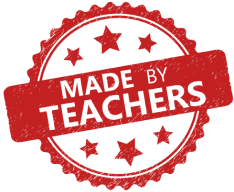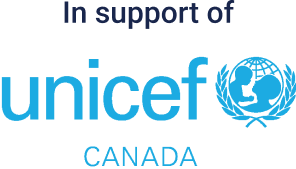Ontario Grade 8

CLICK HERE FOR CURRICULUM CONNECTIONS, LESSONS AND SUPPORT RESOURCES.
Made by a Grade 8 teacher in Ontario.
Kids Boost Immunity (KBI) provides educational content (lessons and support materials) developed by teachers and where needed, health experts, that is directly linked to curriculum and is available completely for free. Each lesson is paired with an online quiz that students can take on a laptop, tablet, or phone. Every time a student scores 80% or higher on a quiz, we donate life-saving vaccines to UNICEF Canada. To learn more about KBI, click here.
Click on the overarching curriculum themes below to see the curriculum outcomes that match KBI educational content. The full Grade 8 Ontario Curriculum Connections document is here.
- Science
-
Curricular outcomes:
Science: STEM Skills & Connections
- A3.2- investigate how science and technology can be used with other subject areas to address real-world problems
- A3.3- analyse contributions to science and technology from various communities
Science: Life Science
- B2.1- demonstrate an understanding of cells, using cell theory
- B2.2-identify organelles and other cell components, including the nucleus, cell membrane, cell wall, chloroplasts, vacuole, mitochondria, and cytoplasm, and explain their basic functions
- B2.5- describe various unicellular and multicellular organisms, and compare ways in which these two types of organisms meet their basic needs
Science: Earth & Space Systems
- E2.1- identify the states of water on Earth’s surface, their distribution, relative amounts, and circulation, and the conditions under which they exist
- E2.3- explain how human activity and natural phenomena cause changes in the water table
- E2.4- identify factors, including climate change, that have contributed to the melting of glaciers and polar ice-caps, and describe the effects of this phenomenon on local and global water systems
- E2.6-describe various indicators of water quality, and explain the impact of human activity on those indicators
- E1.1- assess the social and environmental impact of the scarcity of fresh water, and propose a plan of action to help address fresh water sustainability issues
Applicable KBI lessons:
1. Diversity of Living Things
- Literacy builder worksheet/answer guide
- Lesson worksheet/answers
2. Environment & Climate Change
- Literacy builder worksheet/answer guide
- Lesson worksheet/answers
- Video worksheet/answers
- Inquiry activities/answer guides
- Numeracy activity/answers
- History
-
Curricular outcomes:
History: Canada 1850-1890
- A1.2- assess the impact that limitations with respect to legal status, rights, and privileges had on First Nations, Métis, and Inuit individuals and/or communities in Canada between 1850 and 1890
- A2.2- gather and organize information and evidence about perspectives of different groups and communities, including First Nations, Métis, and/or Inuit communities, on some significant events, developments, and/or issues that affected Canada and/or people in Canada during this period, using a variety of primary sources and secondary sources
- A2.6- evaluate evidence and draw conclusions about perspectives of different groups and communities, including First Nations, Métis, and/or Inuit communities, on some significant events, developments, and/or issues in Canada during this period
- A3.2- describe key political and legal developments that affected First Nations, Métis, and Inuit people during this period, including treaties, government policies, and the Indian Act and other legislation
- A3.3- identify some key factors that contributed to the establishment of the residential school system
History: Canada 1890-1914
- B1.2- analyse some ways in which challenges affected First Nations, Métis, and Inuit individuals, families, and communities during this period, with specific reference to treaties, the Indian Act, the reserve system, and the residential school system
- B3.1- identify factors contributing to some key issues, events, and/or developments that specifically affected First Nations, Métis, and Inuit in Canada between 1890 and 1914
- B3.3- identify key political and legal changes that occurred in and/or affected Canada during this period, and explain the impact of some of these changes on various individuals, groups, and/or communities, including First Nations, Métis, and Inuit individuals and/or communities
- B3.5- describe significant examples of cooperation and conflict in Canada during this period
Applicable KBI lessons:
1. Indigenous History on Turtle Island
- Lesson worksheet
- English Language Arts (ELA)
-
Curricular outcomes:
Language: Literacy Connections & Applications
- A2.2- demonstrate an understanding of how to navigate online environments safely, manage their privacy, personal data, and security, and interact in a way that supports their well-being and that of others, including seeking appropriate permission
- A2.3- conduct research, considering accuracy, credibility, and perspectives, with a focus on misinformation, disinformation, and curated information, to construct knowledge, create texts, and demonstrate learning, while respecting legal and ethical considerations
- A2.4- evaluate the use of the various forms, conventions, and techniques of digital and media texts, consider the impact on the audience, and apply this understanding when analyzing and creating texts
- A2.5- demonstrate an understanding of the interrelationships between the form, message, and context of texts, the intended and unintended audience, and the purpose for production
Language: Comprehension
- C1.2- analyze a variety of text forms and genres, including cultural text forms, and explain how their characteristics help communicate meaning
- C1.3- analyze text patterns, such as cause and effect in an expository text, and text features, such as a bibliography and accessible fonts, associated with various text forms, including cultural texts, and explain how they help readers, listeners, and viewers understand the meaning
- C1.5- identify various elements of style in texts, including voice, word choice, word patterns, and sentence structure, and analyze how each element helps create meaning and is appropriate for the text form and genre
- C2.2- identify a variety of purposes for engaging with texts, select texts from diverse creators that are suitable for the purposes, and explain why the selections are appropriate
- C2.4- select suitable strategies, such as visualizing, reading ahead, asking questions, and consulting references and other texts or sources of information, to monitor and confirm their understanding of various texts and solve comprehension problems
- C3.5- explain explicit and implicit perspectives communicated in various texts, including narrative texts, provide any evidence that could suggest bias in these perspectives, and suggest ways to avoid any such bias
- C3.8- compare the critical thinking skills they used when analyzing and evaluating various texts, identify the skills that best supported their understanding, and explain why they were effective
Applicable KBI lessons:
1. Critical Thinking & Evaluating Information
- Literacy builder worksheet/answer guide
- Lesson worksheet/answers
- Video worksheet/answers
- Inquiry activities/answer guides
- Numeracy activity/answers
2. Navigating the World of Online (Mis)Information
- Inquiry activities
- Geography
-
Curricular outcomes:
Geography: Global Inequalities
- B1.1- analyse some interrelationships among factors that can contribute to quality of life
- B1.2- analyse how various factors have affected the economies of specific developed and developing countries around the world
- B1.3- assess the effectiveness of various programs and policies aimed at improving the quality of life in various countries
- B1.4- assess the effectiveness of media in improving the quality of life in some countries/regions around the world
- B2.5- evaluate evidence and draw conclusions about issues related to global development and quality of life
- B3.1- identify and describe the significance of several indicators that are commonly used to measure quality of life on a global scale
- B3.5- identify various groups and organizations that work to improve quality of life
- B3.8- identify and describe various factors that can contribute to economic development
Applicable KBI lessons:
1. Global Inequality
- Lesson worksheet/answers
- Video worksheet/answers
- Inquiry activities/answer guides
Curriculum-Related Themes Throughout the Year
- Reflecting on hardships and courage during WWII (November)
-
Curricular outcomes:
History:
- A3.1 – identify factors contributing to some key events or developments that occurred in and/or affected Canada between 1850 and 1890, and explain the historical significance of some of the these events for different individuals, groups, and/or communities, including First Nations, Metis, and Inuit individuals and/or communities
- A3.6- describe significant instances of cooperation and conflict in Canada during this period.
- A3.7- identify a variety of significant individuals and groups in Canada during this period, and explain their contributions to heritage and/or identities in Canada
Language:
- A1.1- analyze and explain how transferable skills can be used to support communication in various cultural, social, linguistic, and domain-specific contexts, and apply them when reading, listening to, viewing, and creating texts of various forms
- A2.1- evaluate and explain their rights and responsibilities when interacting online with appropriate permission, and make decisions that contribute positively to the development of their digital identify and those of their communities.
- A2.2- demonstrate and understanding of how to navigate online environments safely, manage their privacy, personal data, and security, and interact in a way that supports their well-being and that of others, including seeking appropriate permission.
- C2.1- identify and explain prior knowledge from various sources, including personal experiences and learning in other subject areas, that they can use to make connections and understand new texts
- C2.3- make predictions using background knowledge and textual information, pose questions to confirm or refute their predictions, and revise or refine their understanding as indicated.
- C2.5- connect, compare, and contrast the ideas expressed in texts and their knowledges and lived experiences, the ideas in other texts, and the world around them.
Applicable KBI lessons:
1. Remembrance Day / Veterans Day / Armistice Day
- Reflecting on leadership qualities that foster kindness (December)
-
Curricular outcomes:
Language:
- A1.1- analyze and explain how transferable skills can be used to support communication in various cultural, social, linguistic, and domain-specific contexts, and apply them when reading, listening to, viewing, and creating texts of various forms
- A2.1- evaluate and explain their rights and responsibilities when interacting online with appropriate permission, and make decisions that contribute positively to the development of their digital identify and those of their communities.
- A2.2- demonstrate and understanding of how to navigate online environments safely, manage their privacy, personal data, and security, and interact in a way that supports their well-being and that of others, including seeking appropriate permission.
- C2.1- identify and explain prior knowledge from various sources, including personal experiences and learning in other subject areas, that they can use to make connections and understand new texts
- C2.3- make predictions using background knowledge and textual information, pose questions to confirm or refute their predictions, and revise or refine their understanding as indicated.
- C2.5- connect, compare, and contrast the ideas expressed in texts and their knowledges and lived experiences, the ideas in other texts, and the world around them.
Applicable KBI lessons:
1. Christmas in No Man’s Land - Reflecting on Kindness
- Inquiry/creative activities
- Highlighting some key inspirational leaders during Black History Month as well as some experiences of refugees from different parts of the world (February)
-
Curricular outcomes:
Science
- A3.2- investigate how science and technology can be used with other subject areas to address real-world problems
- A3.3- analyse contributions to science and technology from various communities
- B2.2- identify organelles and other cell components, including the nucleus, cell membrance, cell wall, chloroplasts, vacuole, mitochondria, and cytoplasm, and explain their basic functions.
Geography:
- B1.1- analyse some interrelationships among factors that can contribute to quality of life
- B1.3- assess the effectiveness of various programs and policies aimed at improving the quality of life in various countries.
- B3.5- identify various groups and organization that work to improve quality of life, and describe their focus.
Language:
- A1.1- analyze and explain how transferable skills can be used to support communication in various cultural, social, linguistic, and domain-specific contexts, and apply them when reading, listening to, viewing, and creating texts of various forms
- A2.1- evaluate and explain their rights and responsibilities when interacting online with appropriate permission, and make decisions that contribute positively to the development of their digital identify and those of their communities.
- A2.2- demonstrate and understanding of how to navigate online environments safely, manage their privacy, personal data, and security, and interact in a way that supports their well-being and that of others, including seeking appropriate permission.
- C2.1- identify and explain prior knowledge from various sources, including personal experiences and learning in other subject areas, that they can use to make connections and understand new texts
- C2.3- make predictions using background knowledge and textual information, pose questions to confirm or refute their predictions, and revise or refine their understanding as indicated.
- C2.5- connect, compare, and contrast the ideas expressed in texts and their knowledges and lived experiences, the ideas in other texts, and the world around them.
Applicable KBI lessons:
1. Black History Month
2. Refugee Experiences
- Lesson worksheet/answers
- Inquiry activities
- Celebrating Inspiring Women in STEM (March)
-
Curricular outcomes:
Science
- A3.2- investigate how science and technology can be used with other subject areas to address real-world problems
- A3.3- analyse contributions to science and technology from various communities
Language:
- A1.1- analyze and explain how transferable skills can be used to support communication in various cultural, social, linguistic, and domain-specific contexts, and apply them when reading, listening to, viewing, and creating texts of various forms
- A2.1- evaluate and explain their rights and responsibilities when interacting online with appropriate permission, and make decisions that contribute positively to the development of their digital identify and those of their communities.
- A2.2- demonstrate and understanding of how to navigate online environments safely, manage their privacy, personal data, and security, and interact in a way that supports their well-being and that of others, including seeking appropriate permission.
- C2.1- identify and explain prior knowledge from various sources, including personal experiences and learning in other subject areas, that they can use to make connections and understand new texts
- C2.3- make predictions using background knowledge and textual information, pose questions to confirm or refute their predictions, and revise or refine their understanding as indicated.
- C2.5- connect, compare, and contrast the ideas expressed in texts and their knowledges and lived experiences, the ideas in other texts, and the world around them.
Applicable KBI lessons:
1. International Women's Day - Celebrating Inspiring Women in STEM
- Literacy builder worksheets/answer guides
- Numeracy activity
- Inquiry activities
- Understanding communicable diseases and how they are spread, and learning about immunization. Suggested during flu season, immunization awareness week, and school vaccinations (if applicable)
-
Curricular outcomes:
Language:
- A1.1- analyze and explain how transferable skills can be used to support communication in various cultural, social, linguistic, and domain-specific contexts, and apply them when reading, listening to, viewing, and creating texts of various forms
- A2.1- evaluate and explain their rights and responsibilities when interacting online with appropriate permission, and make decisions that contribute positively to the development of their digital identify and those of their communities.
- A2.2- demonstrate and understanding of how to navigate online environments safely, manage their privacy, personal data, and security, and interact in a way that supports their well-being and that of others, including seeking appropriate permission.
- C2.1- identify and explain prior knowledge from various sources, including personal experiences and learning in other subject areas, that they can use to make connections and understand new texts
- C2.3- make predictions using background knowledge and textual information, pose questions to confirm or refute their predictions, and revise or refine their understanding as indicated.
- C2.5- connect, compare, and contrast the ideas expressed in texts and their knowledges and lived experiences, the ideas in other texts, and the world around them.
Science
- A1.1 use scientific research process and associated skills to conduct investigations
- A1.2 use a scientific experimentation process and associated skills to conduct investigations
- A3.2- investigate how science and technology can be used with other subject areas to address real-world problems
- A3.3- analyse contributions to science and technology from various communities
Applicable KBI lessons:
1. Immunization Awareness Week
2. The Spread of Infectious Diseases
3. Scientific Curiosity and Vaccine Discoveries
- Literacy builder worksheets/answer guides
- Inquiry activities




